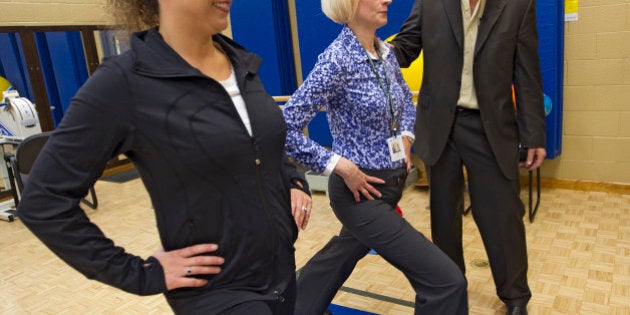
As a pelvic health physiotherapist I have the incredible privilege of working with and helping women who experience difficult issues, such as having pelvic pain, incontinence, or a pelvic organ prolapse. Issues that often dramatically influence their quality of life, their self-esteem, and the activities they choose or choose not to participate in as a result.
One of the biggest misconceptions and piece of advice that I hear is, 'Just do more Kegels'.
But will doing more Kegels fix your pelvic floor dysfunction?
Will Kegels alone rid of your incontinence and help with your pain?
I'm here to set the record straight.
It is incredibly important for to understand that simply doing Kegels isn't enough, and sometimes it may be the exact opposite of what you want to do.
There is large percentage of women who perform Kegels incorrectly, many of whom actually increase the pressure pushing down on the pelvic floor when they are attempting to do a Kegel leading to the exact opposite desired outcome -- a weakened, less functional pelvic floor.
Furthermore, many women who perform Kegels actively use other muscles to do the movement, including the buttocks, abdomen and thighs. If you are doing Kegels improperly and then were to practice every day this could lead to further dysfunction.
Another reason that performing Kegels isn't enough is that there are many women who experience overactive pelvic floor muscles. These women already have a pelvic floor that is contracted; so practicing contraction over and over again will only lead to further dysfunction without the proper direction.
Yes, perhaps you don't need to do Kegels and the implementation of doing them can actually be harmful to your pelvic health!
In addition, ensuring that the body is functioning as a unit is imperative when it comes to resolving issues of the pelvic floor. This requires muscular strength and endurance as well as coordination of the entire core as a unit, which includes the pelvic floor as well as the diaphragm, hip, and trunk muscles all working together.
Moreover, behaviour and lifestyle factors play a huge role in how your pelvic floor functions, and if you're not aware of these factors doing your Kegels may do little to improve your symptoms.
So, yes, as you can see, just doing Kegels isn't enough.
What do I recommend?
First off, I have written a free ebook providing more information on pelvic health which you can download here - http://tayloredtraining.ca/pelvic-floor-physiotherapy/
Secondly, I highly encourage women to be proactive by connecting with a pelvic health physiotherapist who can properly assess and treat issues before they inhibit their lifestyle.
So often I have women come to see me who have been in pain and discomfort for years. Their embarrassment coupled with a lack of awareness about treatment options left them feeling discouraged and hopeless that their issues could ever be resolved. Please don't wait.
You don't have to live with pain, discomfort or incontinence -- it's time to feel better and live better.
Cassie Dionne
PT, BPHE, MScPT
Follow HuffPost Canada Blogs on Facebook